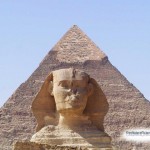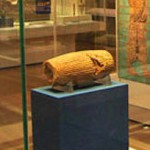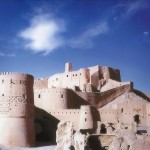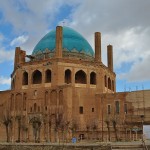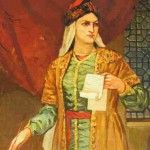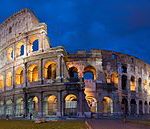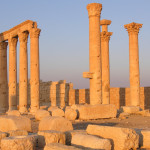 A New exhibition presents documents that creates the foundations for reconstruction of the city of Aleppo and other sites ruined by civil war in Syria. The efforts behind this exhibition actually started a while back by a Syrian archeologist who left Aleppo in September 2012. This was weeks before the all flights from the airport were suspended. Rami Alafandi spent the next five years in Malaysia working on a doctorate focused on the ornately decorated Ottoman-era wood panelling in 12 stately Aleppo houses. From there he went to Berlin, where his research could support preparations for the reconstruction of his homeland’s heritage.
A New exhibition presents documents that creates the foundations for reconstruction of the city of Aleppo and other sites ruined by civil war in Syria. The efforts behind this exhibition actually started a while back by a Syrian archeologist who left Aleppo in September 2012. This was weeks before the all flights from the airport were suspended. Rami Alafandi spent the next five years in Malaysia working on a doctorate focused on the ornately decorated Ottoman-era wood panelling in 12 stately Aleppo houses. From there he went to Berlin, where his research could support preparations for the reconstruction of his homeland’s heritage.
Alafandi had taken hundreds of photographs and video footage of the Aleppine houses between 2006 and 2010. His pre-war photographs of buildings such as Beit Ghazaleh, a 17th-century house that was restored in 2009-10, actually suffered major during the war. Alafandi is now working with a team working on an initiative called Aleppo Built Heritage Documentation, a sub-division of the Syrian Heritage Archive Project, led by Berlin’s Museum of Islamic Art and the German Archaeological Institute as reported by several news outlets. An exhibition opening on 28 February, 2019 at Berlin’s Pergamonmuseum will be a major showcase for the Syrian Heritage Archive Project’s work.
The exhibition will present some of these documents, photographs along with films and interactive screens. In particular, the exhibition will be “a virtual voyage of discovery” through Syrian heritage, concentrating on the cities of Damascus and Aleppo, Palmyra, Raqqa and the so-called “dead cities”, a group of around 700 abandoned settlements in the north west.
The project which is the first of its kind is funded by the German foreign office, the Gerda Henkel Foundation and the Andrew W. Mellon Foundation. This project is the largest repository of information on Syrian heritage outside the country with more than 200,000 photographs, as well as archaeological reports, maps, plans, drawings and oral testimonies according to Stefan Weber, the director of the Museum of Islamic Art and actually a former resident of Damascus. The project which is also crowdsourced includes documents which come from researchers such as Alafandi and private and public historic archives, as well as Syrian residents and refugees. Weber says that ultimately, the Syrian Heritage Archive Project seeks to “provide a foundation for rebuilding in the future” as reported by The Art Newspaper.
At this time, the project has 15 full-time employees, nine of whom are Syrian and two half-Syrian. The team has sent data packages on heritage sites to UNESCO, including a report on the missing wooden panels at Beit Ghazaleh. The team believes that the wooden panels were removed to be sold in the international black market for heritage artifacts. This has been given to Interpol and the International Council of Museums in the hope that the panels resurface on the art market and can be returned.
The hope is that this project could be a conduit for rebuilding many Syrian sites and cities including Palmyra and Aleppo. Aleppo is in need of urgent reconstruction priority as the population and economic life return according to Stefan Weber. Aleppo which has been a World Heritage site since 1986, the city has been inhabited continually for more than 5,000 years, and was a hub on many key trade routes from the second millennium BC. Researchers believe that in the 16th century, the city was the same size as London.
In January 2018, the Syrian Directorate General of Antiquities and Museums surveyed 170 buildings and reported for UNESCO, 9% were completely destroyed and a further 24% were mainly destroyed. Weber actually compared Aleppo with Berlin after the Second World War: “It is not as bad as Berlin was in 1945, but there have been heavy losses”.
Since the European Union has established sanctions against Assad’s regime, no funding from EU has so far been allocated to the project. But some projects financed by other sources have started: the Chechen government is funding the rebuilding of the partially damaged Umayyad Mosque, one of Aleppo’s oldest and largest mosques. The Aga Khan Trust for Culture (AKTC), which maintained a limited presence in the city during the war, is helping to restore the Al-Saqatiyya souk.
• The Cultural Landscape of Syria: Preservation and Archiving in Times of War, Pergamonmuseum, Berlin, 28 February-26 May



